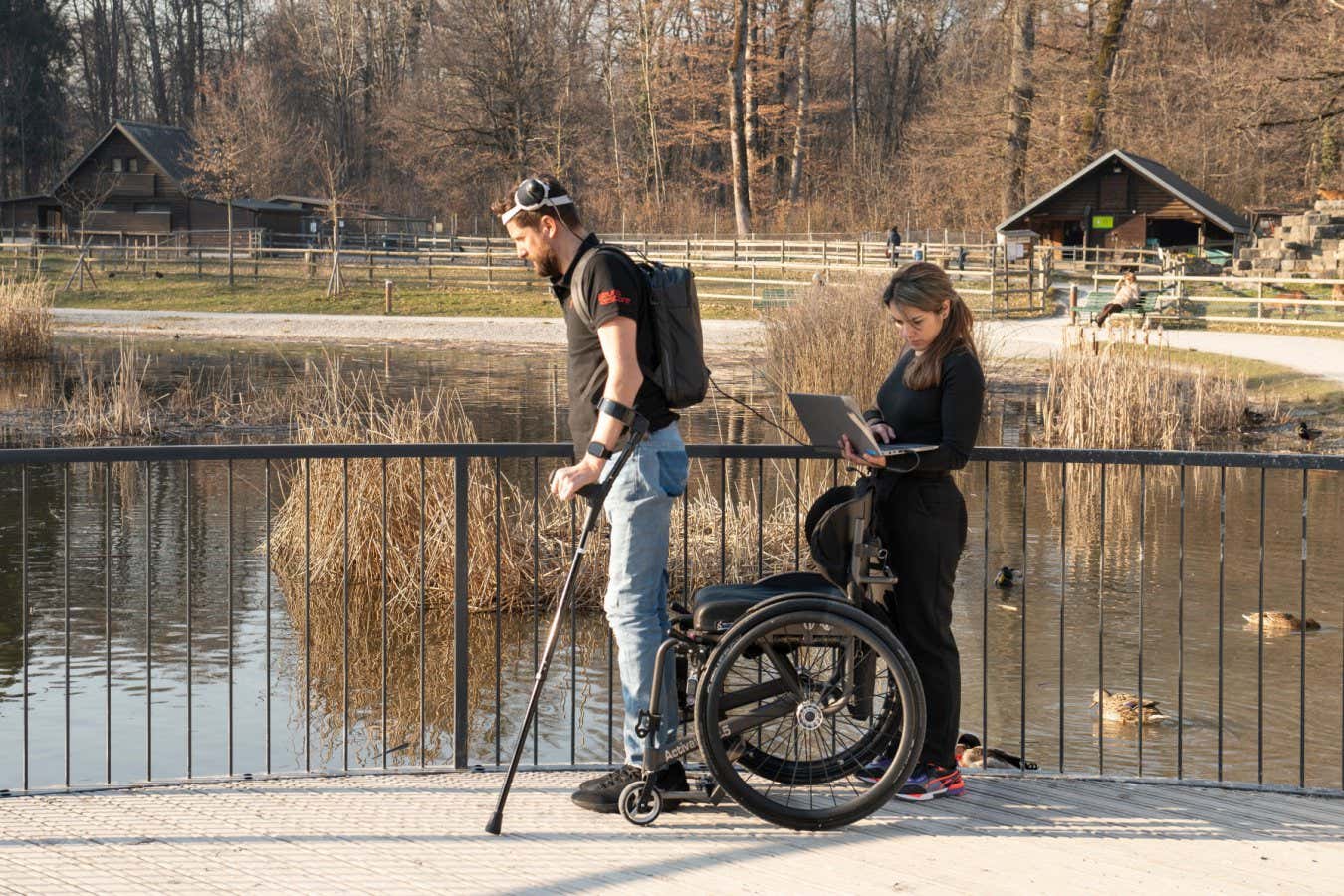Implants in his brain and spine let a man who broke his neck walk and climb stairs by thinking about it, and he can even walk a short distance with the device turned off
By Clare Wilson
24 May 2023
Gert-Jan Oskam walking with the aid of brain and spine implants and a backpack computer
CHUV 2022/WEBER Gilles
A Dutch man who was paralysed after breaking his neck can now walk with crutches after receiving implants that let his brain send signals to his spine through a computer in a backpack.
Gert-Jan Oskam, who is 40, can now stand up from a seated position, go upstairs and walk around outside on uneven ground. “The stimulation will kick in as soon as I think about [taking] a step,” he says.
Oskam has also found that even when the device is turned off, he is able to walk short distances with a wheeled walking frame. Grégoire Courtine at the Swiss Federal Institute of Technology (EPFL) in Geneva and his colleagues, who developed the technology, think this may be because the repeated exercise has stimulated regrowth of nerve cells in the spine.
Advertisement
The brain implants are contained within two 5-centimetre discs that rest on the brain’s surface, having replaced two circles of bone taken from the skull. They communicate wirelessly with a helmet-like receiver, which sends signals to the backpack computer. The computer then sends signals to stimulators put into Oskam’s spinal cord, which trigger movements of the leg muscles.
The system is an upgrade on the first version, which Oskam received five years ago, which involved only the spinal electrodes. With this version, Oskam activated each step by making a small heel movement, which he could do because the accident hadn’t completely severed his spinal cord. The heel movements were detected by lightweight motion sensors, and this caused the spinal implants to trigger semiautomatic stepping movements coordinated by networks of neurons in the lower spinal cord.
The resulting steps allowed Oskam to walk over flat ground using a wheeled walking frame. “This gave more like a robotic stepping movement,” says Courtine.
